+ Open data
Open data
- Basic information
Basic information
| Entry | Database: PDB / ID: 4hls | ||||||
|---|---|---|---|---|---|---|---|
| Title | Crystal structure of mutant rabbit PRP 121-230 (S170N) | ||||||
 Components Components | Major prion protein | ||||||
 Keywords Keywords |  MEMBRANE PROTEIN / prp / MEMBRANE PROTEIN / prp /  prion / prion /  membrane membrane | ||||||
| Function / homology |  Function and homology information Function and homology informationregulation of glutamate receptor signaling pathway / regulation of calcium ion import across plasma membrane / aspartic-type endopeptidase inhibitor activity /  glycosaminoglycan binding / negative regulation of interleukin-17 production / regulation of potassium ion transmembrane transport / negative regulation of dendritic spine maintenance / type 5 metabotropic glutamate receptor binding / cupric ion binding / negative regulation of interleukin-2 production ...regulation of glutamate receptor signaling pathway / regulation of calcium ion import across plasma membrane / aspartic-type endopeptidase inhibitor activity / glycosaminoglycan binding / negative regulation of interleukin-17 production / regulation of potassium ion transmembrane transport / negative regulation of dendritic spine maintenance / type 5 metabotropic glutamate receptor binding / cupric ion binding / negative regulation of interleukin-2 production ...regulation of glutamate receptor signaling pathway / regulation of calcium ion import across plasma membrane / aspartic-type endopeptidase inhibitor activity /  glycosaminoglycan binding / negative regulation of interleukin-17 production / regulation of potassium ion transmembrane transport / negative regulation of dendritic spine maintenance / type 5 metabotropic glutamate receptor binding / cupric ion binding / negative regulation of interleukin-2 production / negative regulation of calcineurin-NFAT signaling cascade / negative regulation of T cell receptor signaling pathway / negative regulation of amyloid-beta formation / cuprous ion binding / negative regulation of activated T cell proliferation / negative regulation of type II interferon production / : / positive regulation of protein targeting to membrane / side of membrane / glycosaminoglycan binding / negative regulation of interleukin-17 production / regulation of potassium ion transmembrane transport / negative regulation of dendritic spine maintenance / type 5 metabotropic glutamate receptor binding / cupric ion binding / negative regulation of interleukin-2 production / negative regulation of calcineurin-NFAT signaling cascade / negative regulation of T cell receptor signaling pathway / negative regulation of amyloid-beta formation / cuprous ion binding / negative regulation of activated T cell proliferation / negative regulation of type II interferon production / : / positive regulation of protein targeting to membrane / side of membrane /  inclusion body / cellular response to copper ion / molecular condensate scaffold activity / neuron projection maintenance / protein sequestering activity / negative regulation of protein phosphorylation / molecular function activator activity / positive regulation of protein localization to plasma membrane / protein destabilization / protein homooligomerization / inclusion body / cellular response to copper ion / molecular condensate scaffold activity / neuron projection maintenance / protein sequestering activity / negative regulation of protein phosphorylation / molecular function activator activity / positive regulation of protein localization to plasma membrane / protein destabilization / protein homooligomerization /  terminal bouton / cellular response to amyloid-beta / positive regulation of neuron apoptotic process / positive regulation of peptidyl-tyrosine phosphorylation / cellular response to xenobiotic stimulus / terminal bouton / cellular response to amyloid-beta / positive regulation of neuron apoptotic process / positive regulation of peptidyl-tyrosine phosphorylation / cellular response to xenobiotic stimulus /  signaling receptor activity / signaling receptor activity /  amyloid-beta binding / amyloid-beta binding /  microtubule binding / microtubule binding /  nuclear membrane / response to oxidative stress / nuclear membrane / response to oxidative stress /  protease binding / learning or memory / copper ion binding / protease binding / learning or memory / copper ion binding /  membrane raft / membrane raft /  dendrite / protein-containing complex binding / negative regulation of apoptotic process / dendrite / protein-containing complex binding / negative regulation of apoptotic process /  Golgi apparatus / Golgi apparatus /  cell surface / cell surface /  endoplasmic reticulum / identical protein binding / endoplasmic reticulum / identical protein binding /  plasma membrane / plasma membrane /  cytosol cytosolSimilarity search - Function | ||||||
| Biological species |   Oryctolagus cuniculus (rabbit) Oryctolagus cuniculus (rabbit) | ||||||
| Method |  X-RAY DIFFRACTION / X-RAY DIFFRACTION /  SYNCHROTRON / SYNCHROTRON /  MOLECULAR REPLACEMENT / Resolution: 1.45 Å MOLECULAR REPLACEMENT / Resolution: 1.45 Å | ||||||
 Authors Authors | Sweeting, B. / Chakrabartty, A. / Pai, E.F. | ||||||
 Citation Citation |  Journal: Plos One / Year: 2013 Journal: Plos One / Year: 2013Title: N-Terminal Helix-Cap in alpha-Helix 2 Modulates beta-State Misfolding in Rabbit and Hamster Prion Proteins. Authors: Sweeting, B. / Brown, E. / Khan, M.Q. / Chakrabartty, A. / Pai, E.F. | ||||||
| History |
|
- Structure visualization
Structure visualization
| Structure viewer | Molecule:  Molmil Molmil Jmol/JSmol Jmol/JSmol |
|---|
- Downloads & links
Downloads & links
- Download
Download
| PDBx/mmCIF format |  4hls.cif.gz 4hls.cif.gz | 110.5 KB | Display |  PDBx/mmCIF format PDBx/mmCIF format |
|---|---|---|---|---|
| PDB format |  pdb4hls.ent.gz pdb4hls.ent.gz | 84.1 KB | Display |  PDB format PDB format |
| PDBx/mmJSON format |  4hls.json.gz 4hls.json.gz | Tree view |  PDBx/mmJSON format PDBx/mmJSON format | |
| Others |  Other downloads Other downloads |
-Validation report
| Arichive directory |  https://data.pdbj.org/pub/pdb/validation_reports/hl/4hls https://data.pdbj.org/pub/pdb/validation_reports/hl/4hls ftp://data.pdbj.org/pub/pdb/validation_reports/hl/4hls ftp://data.pdbj.org/pub/pdb/validation_reports/hl/4hls | HTTPS FTP |
|---|
-Related structure data
| Related structure data | 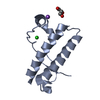 4hmmC 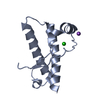 4hmrC 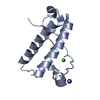 3o79S C: citing same article ( S: Starting model for refinement |
|---|---|
| Similar structure data |
- Links
Links
- Assembly
Assembly
| Deposited unit | 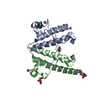
| ||||||||||||
|---|---|---|---|---|---|---|---|---|---|---|---|---|---|
| 1 | 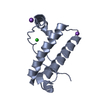
| ||||||||||||
| 2 | 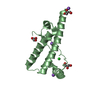
| ||||||||||||
| 3 |
| ||||||||||||
| Unit cell |
| ||||||||||||
| Noncrystallographic symmetry (NCS) | NCS oper:
|
- Components
Components
| #1: Protein | Mass: 15266.954 Da / Num. of mol.: 2 / Fragment: UNP residues 119-229 / Mutation: S170N Source method: isolated from a genetically manipulated source Source: (gene. exp.)   Oryctolagus cuniculus (rabbit) / Gene: PRNP, PRP / Production host: Oryctolagus cuniculus (rabbit) / Gene: PRNP, PRP / Production host:   Escherichia coli (E. coli) / Strain (production host): BL21 (AI) / References: UniProt: Q95211 Escherichia coli (E. coli) / Strain (production host): BL21 (AI) / References: UniProt: Q95211#2: Chemical |  Chloride Chloride#3: Chemical | ChemComp-NA / #4: Chemical |  Glycerol Glycerol#5: Water | ChemComp-HOH / |  Water Water |
|---|
-Experimental details
-Experiment
| Experiment | Method:  X-RAY DIFFRACTION / Number of used crystals: 1 X-RAY DIFFRACTION / Number of used crystals: 1 |
|---|
- Sample preparation
Sample preparation
| Crystal | Density Matthews: 1.81 Å3/Da / Density % sol: 32.01 % |
|---|---|
Crystal grow | Temperature: 298 K / Method: vapor diffusion, hanging drop / pH: 6.5 Details: 100mM SODIUM CACODYLATE PH 6.5, 3.0M NACL, 30% GLYCEROL, VAPOR DIFFUSION, HANGING DROP, temperature 298K |
-Data collection
| Diffraction | Mean temperature: 100 K |
|---|---|
| Diffraction source | Source:  SYNCHROTRON / Site: SYNCHROTRON / Site:  CLSI CLSI  / Beamline: 08ID-1 / Wavelength: 0.9793 Å / Beamline: 08ID-1 / Wavelength: 0.9793 Å |
| Detector | Type: MARMOSAIC 300 mm CCD / Detector: CCD / Date: Jul 8, 2008 |
| Radiation | Monochromator: DCM WITH CRYO-COOLED 1ST CRYSTAL, SAGITTALLY BENT 2ND CRYSTAL, FOLLOWED BY VERTICALLY FOCUSING MIRROR Protocol: SINGLE WAVELENGTH / Monochromatic (M) / Laue (L): M / Scattering type: x-ray |
| Radiation wavelength | Wavelength : 0.9793 Å / Relative weight: 1 : 0.9793 Å / Relative weight: 1 |
| Reflection | Resolution: 1.45→60 Å / Num. all: 39174 / Num. obs: 39174 / % possible obs: 97.3 % / Observed criterion σ(F): 0 / Observed criterion σ(I): 0 / Redundancy: 7.7 % / Rmerge(I) obs: 0.059 / Rsym value: 0.051 / Net I/σ(I): 24.29 |
| Reflection shell | Resolution: 1.45→1.5 Å / Rmerge(I) obs: 0.538 / Mean I/σ(I) obs: 3.6 / Num. unique all: 2798 / % possible all: 73.2 |
- Processing
Processing
| Software |
| ||||||||||||||||||||||||||||||||||||||||||||||||||||||||||||||||||||||||||||||||||||||||||||||||||||||||||||||||||||||||||||||||||||||||||||||||||||||||||||||||||||||||||
|---|---|---|---|---|---|---|---|---|---|---|---|---|---|---|---|---|---|---|---|---|---|---|---|---|---|---|---|---|---|---|---|---|---|---|---|---|---|---|---|---|---|---|---|---|---|---|---|---|---|---|---|---|---|---|---|---|---|---|---|---|---|---|---|---|---|---|---|---|---|---|---|---|---|---|---|---|---|---|---|---|---|---|---|---|---|---|---|---|---|---|---|---|---|---|---|---|---|---|---|---|---|---|---|---|---|---|---|---|---|---|---|---|---|---|---|---|---|---|---|---|---|---|---|---|---|---|---|---|---|---|---|---|---|---|---|---|---|---|---|---|---|---|---|---|---|---|---|---|---|---|---|---|---|---|---|---|---|---|---|---|---|---|---|---|---|---|---|---|---|---|---|
| Refinement | Method to determine structure : :  MOLECULAR REPLACEMENT MOLECULAR REPLACEMENTStarting model: PDB ENTRY 3O79 Resolution: 1.45→43.51 Å / Cor.coef. Fo:Fc: 0.972 / Cor.coef. Fo:Fc free: 0.954 / SU B: 1.889 / SU ML: 0.033 / Isotropic thermal model: anisotropic / Cross valid method: THROUGHOUT / σ(F): 0 / ESU R: 0.068 / ESU R Free: 0.062 / Stereochemistry target values: MAXIMUM LIKELIHOOD / Details: HYDROGENS HAVE BEEN ADDED IN THE RIDING POSITIONS
| ||||||||||||||||||||||||||||||||||||||||||||||||||||||||||||||||||||||||||||||||||||||||||||||||||||||||||||||||||||||||||||||||||||||||||||||||||||||||||||||||||||||||||
| Solvent computation | Ion probe radii: 0.8 Å / Shrinkage radii: 0.8 Å / VDW probe radii: 1.2 Å / Solvent model: MASK | ||||||||||||||||||||||||||||||||||||||||||||||||||||||||||||||||||||||||||||||||||||||||||||||||||||||||||||||||||||||||||||||||||||||||||||||||||||||||||||||||||||||||||
| Displacement parameters | Biso mean: 18.157 Å2
| ||||||||||||||||||||||||||||||||||||||||||||||||||||||||||||||||||||||||||||||||||||||||||||||||||||||||||||||||||||||||||||||||||||||||||||||||||||||||||||||||||||||||||
| Refinement step | Cycle: LAST / Resolution: 1.45→43.51 Å
| ||||||||||||||||||||||||||||||||||||||||||||||||||||||||||||||||||||||||||||||||||||||||||||||||||||||||||||||||||||||||||||||||||||||||||||||||||||||||||||||||||||||||||
| Refine LS restraints |
| ||||||||||||||||||||||||||||||||||||||||||||||||||||||||||||||||||||||||||||||||||||||||||||||||||||||||||||||||||||||||||||||||||||||||||||||||||||||||||||||||||||||||||
| LS refinement shell | Resolution: 1.453→1.491 Å / Total num. of bins used: 20
|
 Movie
Movie Controller
Controller



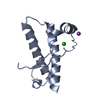
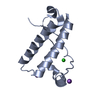
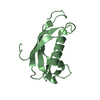
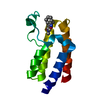
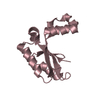
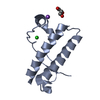
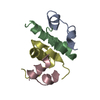
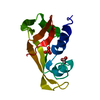
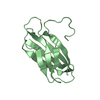
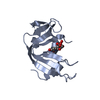
 PDBj
PDBj








